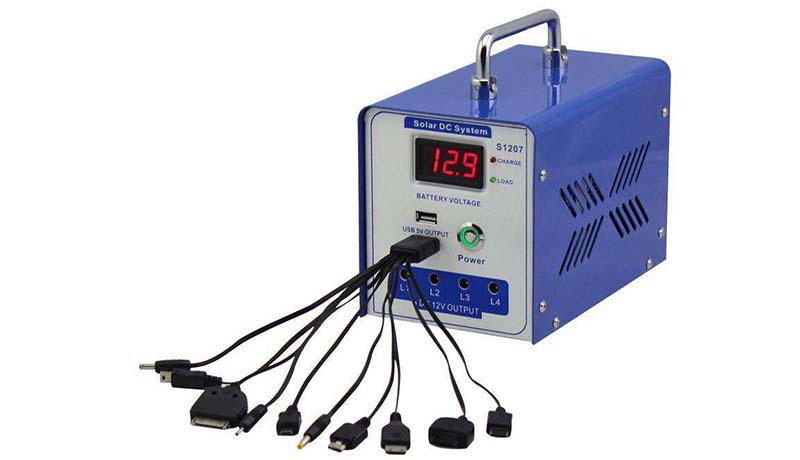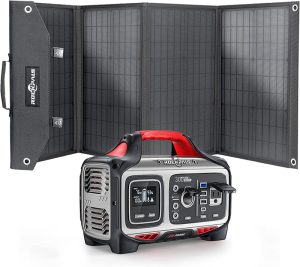
What Are The Different Types Of Batteries And Applications?
Have you ever wondered how many different types of batteries are out there? I know I have. I did a little research and found that there are three primary battery types available for consumer use. They are alkaline, nickel metal hydride (NIMH), and lithium ion. Each type has its pros and cons. Each one also has a distinctive place in technology history.
I hope you enjoy this article. I learned a lot while writing it and I think you will too.
So, How many different types of batteries are there?
There are three primary battery types available for consumer use: alkaline, nickel metal hydride (NIMH), and lithium ion. Each type has its pros and cons, and each one has a distinctive place in technology history.
Let’s dig into it and see if we can figure it out.
What Is A Battery?
A battery is a device that creates and stores electrical energy. It converts chemical energy into electrical energy, which can be used to power electronic devices.
How Batteries Work?
Batteries are an essential part of our lives – they power our phones, laptops, and many other devices. But how do they work?
Batteries are made up of three main parts: the anode, the cathode, and the electrolyte. The anode is the negative electrode, the cathode is the positive electrode, and the electrolyte is the substance that allows ions to move between the electrodes.
When the battery is being used, electrons flow from the anode to the cathode through an external circuit. This flow of electrons creates a current. At the same time, ions flow from the electrolyte to the cathode.
When the battery is not being used, the ions flow back to the anode and the electrons flow back to the cathode through the electrolyte. This reverses the flow of current and recharges the battery.
Batteries come in many different sizes and shapes, but they all work on the same basic principle.
What Is Battery And Why It Is Used?
Batteries are devices that store energy and release it when required. They are made up of one or more cells, each of which contains a positive and negative electrode, separated by an electrolyte. When the electrodes are connected, a chemical reaction takes place that generates an electric current. This current can then be used to power electrical devices.
Batteries are used in a wide variety of applications, from powering small electronic devices like watches and calculators, to providing the energy for larger items like cars and laptops. Their portability and relatively long shelf life make them an ideal power source for many devices.
What Is The Most Common Battery Type?
AA batteries are the most popular type of battery for a wide variety of devices and applications. AA batteries have a small, cylindrical shape and an output of 1.5 volts. Many different types of batteries come in AA size, though some specialty battery types do not.
An additional, AA batteries are the most popular size of batteries for a wide range of devices and applications. They have a small, cylindrical shape and an output of 1.5V. Many different types of batteries come in the AA size, though some specialty battery types don’t.
What Are The 2 Types Of Battery?
Most people are familiar with the common AA, AAA, and 9-volt batteries that power many of our devices, but there are actually two types of batteries: primary and secondary. Here’s a look at the difference between the two types of batteries and how they work.
Primary batteries are “single use” and cannot be recharged. Dry cells and (most) alkaline batteries are examples of primary batteries. Once the chemical reaction inside the battery is complete, the battery is dead and must be replaced.
Secondary batteries, on the other hand, are rechargeable and can be used over and over again. The most common type of secondary battery is the lithium-ion battery, which is used in cell phones, laptops, and electric vehicles.
So, the next time you go to purchase batteries, be sure to choose the right type for your needs!
Furthermore, There are two types of batteries: primary and secondary. Primary batteries are “single use” and cannot be recharged. Dry cells and (most) alkaline batteries are examples of primary batteries. The second type is rechargeable and is called a secondary battery.
What Are The 3 Battery Types?
Alkaline batteries are the most common type of battery. They are relatively inexpensive and have a long shelf life. However, they have a relatively short life once they are used. They also have a tendency to leak, which can damage your gadget.
Nickel metal hydride (NIMH) batteries are more expensive than alkaline batteries, but they last longer. They also don’t leak as much as alkaline batteries. However, NIMH batteries can be damaged by heat, so you need to be careful when using them in hot weather.
Lithium ion batteries are the most expensive type of battery, but they also last the longest. They don’t leak and they can withstand extreme temperatures. However, they can be damaged by overcharging, so you need to be careful not to leave your gadget plugged in for too long.
Moreover, Batteries are used to store electrical energy and power gadgets. The charge of a battery determines how much electrical current it can deliver and how long it can power a gadget. Consumers can choose from three different battery types: Alkaline, nickel metal hydride (NIMH), and lithium ion. Each type has advantages and disadvantages.
Why Are There So Many Different Kinds Of Batteries?
Batteries are essential for many of the devices we use every day, from cell phones to laptops to cars. But have you ever wondered why there are so many different types of batteries?
It turns out that different materials have different electrochemical properties, and so they produce different results when you put them together in a battery cell. For example, some combinations will produce a high voltage very quickly but then drop off rapidly, unable to sustain that voltage for very long.
Other combinations might not produce as high a voltage, but they can sustain it for a longer period of time. And still other combinations might strike a balance between the two.
So which is better? It depends on what you need the battery for. If you need a quick burst of power, like for starting a car, you want a high-voltage battery. But if you need a battery that will power a device for a long time, like a laptop, you want one that can sustain a lower voltage for a longer period of time.
There are also other factors to consider, like how quickly the battery can be recharged, how much power it can store, and how long it will last before it needs to be replaced.
So there you have it: that’s why there are so many different types of batteries! Different applications require different combinations of properties, and so manufacturers produce different types of batteries to meet those needs.
Also, A battery cell is made up of two or more materials that have different electrochemical properties. When these materials are put together, they produce different results. Some combinations produce a high voltage quickly, but then the voltage drops off quickly and cannot be sustained for long.
What Are The Types Of Battery Sizes?
Button cell batteries are small, coin-shaped batteries that power small, portable electronics like watches and hearing aids. Lithium ion batteries are powerful, long-lasting batteries that are found in laptops, cell phones, and digital cameras. AA batteries are the most common type of battery. They are found in remote controls, toys, and smoke detectors. AAA batteries are also common and are used in electronic devices like radios and remote controls.
What Are The 3 Types Of Batteries?
We all know batteries come in all shapes and sizes, but did you know there are only three types? Here’s a quick rundown of the three types of batteries so you can know which one is right for you.
Type #1: Alkaline Batteries
Alkaline batteries are the most common type of battery. They’re the ones you’ll find in your remote control, your child’s toy, and your smoke alarm. Alkaline batteries are made with a chemical called potassium hydroxide, which makes them more stable and longer lasting than other types of batteries.
Type #2: Lithium Batteries
Lithium batteries are the second most common type of battery. They’re often used in cameras, computers, and cell phones. Lithium batteries are made with a chemical called lithium chloride, which makes them lighter and more powerful than alkaline batteries.
Type #3: Acid Batteries
Acid batteries are the least common type of battery. They’re usually only used in industrial applications, such as powering forklifts and other heavy machinery. Acid batteries are made with a chemical called sulfuric acid, which makes them more powerful than lithium batteries. However, acid batteries are also more dangerous and can be more difficult to dispose of properly.
What Are Some Of The Most Popular Types Of Primary Batteries?
There are many different types of primary batteries, each with their own unique benefits and drawbacks. The most popular types of primary batteries include alkaline batteries, lithium batteries, and lead-acid batteries.
Alkaline batteries are the most popular type of primary battery, and for good reason. They are inexpensive, have a long shelf life, and perform well in a wide range of temperatures. However, alkaline batteries are not rechargeable, so once they are used up, they must be replaced.
Lithium batteries are another popular type of primary battery. They are lightweight, have a high energy density, and can be recharged many times. However, lithium batteries can be expensive, and they can be dangerous if not used properly.
Lead-acid batteries are the oldest type of primary battery, and they are still used in many applications today. Lead-acid batteries are reliable and have a long lifespan, but they are heavy and require regular maintenance.
What Is The Most Common Type Of Battery Used In Portable Electronic Devices?
The most common type of battery used in portable electronic devices is the lithium-ion battery. These batteries are lightweight and have a high energy density, making them ideal for use in portable electronic devices. Lithium-ion batteries are also rechargeable, which means they can be used over and over again.
What Types Of Batteries Are Used In Automobiles?
This is a question that is often asked by those who are interested in purchasing a new or used car. There are many different types of batteries that can be used in automobiles, and each has its own advantages and disadvantages.
The most common type of battery used in automobiles is the lead-acid battery. Lead-acid batteries have been used in automobiles for many years and are very reliable. They are also relatively inexpensive to purchase and maintain. However, lead-acid batteries have a number of disadvantages. They are heavy, and they can leak acid if they are not properly maintained.
Another type of battery that can be used in automobiles is the nickel-metal-hydride battery. Nickel-metal-hydride batteries are newer than lead-acid batteries and are not as widely used. However, they have a number of advantages over lead-acid batteries. They are lighter, they do not leak acid, and they have a longer life span.
The lithium-ion battery is the newest type of battery that is being used in automobiles. Lithium-ion batteries have a number of advantages over other types of batteries. They are lighter, they have a longer life span, and they can be charged more quickly. However, lithium-ion batteries are more expensive than other types of batteries.
No matter what type of battery you use in your automobile, it is important to keep it properly maintained. Batteries should be regularly checked for leaks, and the terminals should be cleaned to prevent corrosion.
What Are The Different Types Of Batteries And Their Uses?
Batteries come in many different shapes and sizes, and each type has its own specific use. The three most common types of batteries are AA, AAA, and 9-volt.
AA batteries are the most common type of battery. They are often used in small electronic devices, such as remote controls and portable radios. AAA batteries are slightly smaller than AA batteries and are often used in smaller electronic devices, such as digital cameras and portable DVD players. 9-volt batteries are the largest type of battery and are often used in smoke detectors and walkie-talkies.
Each type of battery has its own specific use, but they all have one thing in common: they store energy that can be used to power electronic devices.
What Are The Different Types Of Batteries In Electrochemistry?
This is a common question asked by those new to the field of electrochemistry. There are many different types of batteries, each with their own unique set of characteristics. The most common types of batteries are lead-acid, nickel-cadmium, and lithium-ion.
Lead-acid batteries are the oldest type of battery and are still widely used today. They are very durable and have a high energy density, making them ideal for powering cars and other vehicles. Lead-acid batteries are also relatively inexpensive to produce.
Nickel-cadmium batteries were once the most popular type of battery, but have fallen out of favor in recent years due to their environmental impact. Nickel-cadmium batteries are still used in some applications, such as power tools, because of their high energy density and long life span.
Lithium-ion batteries are the newest type of battery and are rapidly gaining popularity due to their high energy density and low weight. Lithium-ion batteries are used in a wide variety of applications, including laptops, cell phones, and electric cars.
Can Batteries Be Made To Last Longer Than They Usually Do?
This is a question that battery manufacturers, consumers and environmentalists have been asking for years. The answer, unfortunately, is not a simple one.
The typical lifespan of a AA battery is around 1,500 charges. But with new technology and materials, batteries can now last up to 2,000 charges. And with proper care, your AA batteries can last even longer. Here are a few tips on how to extend the life of your AA batteries:
1. Use the proper charger for your AA batteries. Some chargers are made specifically for NiCad or NiMH batteries, while others can damage your AA batteries.
2. Avoid overcharging your AA batteries. Overcharging can reduce the lifespan of your AA batteries.
3. Store your AA batteries properly. Batteries should be stored in a cool, dry place.
4. Do not discharge your AA batteries completely. Discharging AA batteries completely can also reduce their lifespan.
5. Do not expose your AA batteries to extreme temperatures. Batteries should be stored in a cool, dry place to avoid damage.
By following these simple tips, you can extend the life of your AA batteries and save money in the long run.
What Will The Future Of Batteries Be Like?
This is a question that has been on the minds of scientists and engineers for many years. The answer, unfortunately, is not yet clear. However, there are a few possible scenarios that could play out in the coming years.
One possibility is that batteries could become much smaller and more efficient. This would allow devices to be powered for longer periods of time without the need for frequent recharging. Another possibility is that batteries could be replaced by alternative energy sources such as fuel cells or solar panels.
Whatever the future of batteries may be, one thing is certain: they will continue to play a vital role in our lives.
Final Word
As you can see, there are a variety of battery types on the market. Each one has its own advantages and disadvantages. As a consumer, it is important to understand the difference between each type of battery. With this knowledge, you can make the best decision for your needs.

